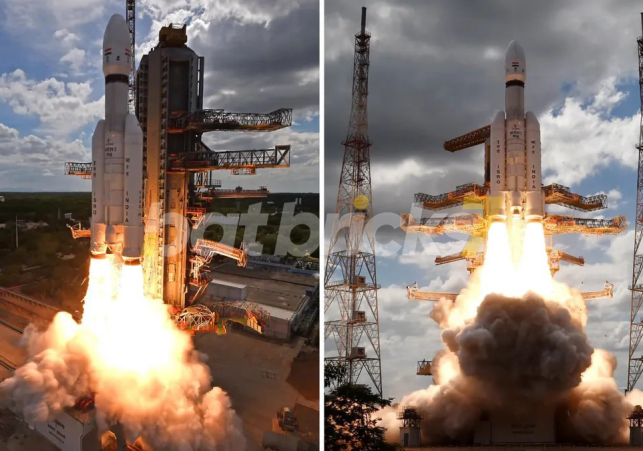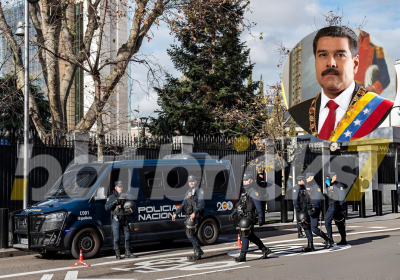Indian Space Agency (ISRO) Successfully Conducted a Crucial Test that will Enable its Largest Rocket LVM3 to Inject Satellites into Orbits at Different Altitudes all in a Single Mission

Explained ISRO can now restart its CE20 Cryogenic engine in space
Recently, the Indian space agency (ISRO) successfully conducted a crucial test that will enable its largest rocket LVM3 to inject satellites into orbits at different altitudes, all in a single mission. This restart capability is made possible due to the development of a 'multi-element ignitor' that can help restart the 'CE-20' Cryogenic engine that sits atop the LVM3 rocket.
During this test, both the engine and facility performance were normal, and the required engine performance parameters were achieved as anticipated, ISRO said.
As the final stage of the LVM3 rocket, it is the Cryogenic engine that is responsible for placing satellites into different designated orbits(altitudes) in space.
This capability improves the operational flexibility and commercial potential of a rocket.
When ferrying multiple satellites, it is crucial to have the capability to restart the final stage engine.
That way, a single rocket can place multiple satellites in different orbits in an efficient manner, thereby avoiding the need for multiple rockets and multiple launches.
In this case, ISRO tested only the first element of the multi-element ignitor, while monitoring the health of the other two elements. Eventually, ISRO would be able to perform two or three re-starts of the cryogenic engine.
PSLV has done several missions where it has placed multiple satellites in different orbits.
For example, in April 2019, India’s Polar Satellite Launch Vehicle (PSLV), in its 47th mission (PSLV-C45), launched EMISAT, the primary satellite and 28 international customer satellites.
The primary Satellite was injected into a 749 km orbit, followed by two fourth-stage restarts to achieve a 504 km orbit, where all customer satellites were injected.
Subsequently, the fourth stage was restarted again to achieve a 485km orbit to serve as an orbital platform to carry out space-borne experimentation.
Significantly, this latest Cryogenic engine restart test was carried out using a specialised test apparatus.
Typically, ISRO tests the Cryogenic engine at a High Altitude Test Facility, which simulates space-like vacuum conditions.
However, the High Altitude Test is a highly sophisticated process and it has certain technical limitations.
"While the Cryogenic engine is meant to fire in space for 200-300 seconds, we are only able to test fire it for a maximum of 25 seconds at the ISRO High Altitude Test Facility.
This 25 seconds is just a fraction of the engine's actual burn time.
Therefore, we devised a unique method to test fire the Cryogenic engine for its actual burn time.
Known as a Sea Level test, this method is typically unsuitable for testing Cryogenic engines, but we introduced some new techniques that helped us test the Cryogenic engine successfully at normal earth-like conditions," Dr. V. Narayanan, Director of ISRO's Liquid Propulsion Systems Centre explained to WION.
We devised a Nozzle Protection System that has paved the way for a cost-effective and less complex procedure for acceptance testing of cryogenic engines.
How ISRO launched 36 satellites using LVM3, before having re-start capability
In October 2022 and March 2023, the LVM3 performed commercial missions for the private firm OneWeb (now Eutelsat OneWeb), launching 36 satellites during each mission.
While ISRO had not developed the Cryogenic engine re-start technology back then, ISRO made use of Cold Gas thrusters to deftly move the Cryogenic stage of the rocket to safely place all satellites in their respective slots.
"The remaining liquid hydrogen in the Cryogenic fuel tank was used to manoeuvre the upper stage in a manner in which we could eject all 36 satellites in their designated orbital slots.
This is known as a cold gas thruster because there is no fuel burning involved.
This method provides small amounts of thrust that can help achieve minor variations in the orbit and attitude(orientation) of the rocket stage.
This is used in some satellites as well, due to its safe and simple operation," Dr. S. Unnikrishnan Nair, Director of ISRO's Vikram Sarabhai Space Centre explained to WION.
So far, only the SSLV(smallest rocket) and PSLV(workhorse rocket) had the upper stage re-start capability.
Now, the LVM3 also has this capability and it goes on to further enhance the commercial potential of our largest rocket, he added.
About the 'CE 20' Cryogenic engine
A cryogenic engine is among the most efficient and complex rocket propulsion systems.
Cryogenic engines typically make use of liquid oxygen (LOX) and liquid hydrogen (LH2).
The former liquefies at -183 degrees Celsius, the latter liquifies at -253 degree Celsius.
The complex storage requirements for these super-cooled propellants make cryogenic engines more challenging to design and operate compared to conventional engines.
The indigenous CE20 cryogenic engine developed by the Liquid Propulsion Systems Centre of ISRO is powering the upper stage of the LVM3 launch vehicle and has been qualified to operate at a thrust level of 19 tonnes.
This engine has successfully powered the upper stage of six LVM3 missions so far.
Recently, the engine was qualified for the Gaganyaan mission with a thrust level of 20 tonnes and also to an upgrated thrust level of 22 tonnes for the future C32 stage, towards enhancing the payload capability of the LVM3 launch vehicle.







